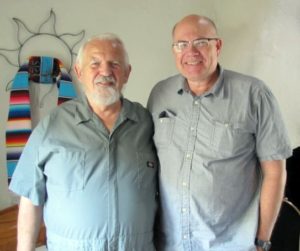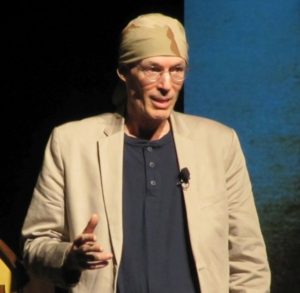Controlled Remote Viewing (Buchanan form)

Developed after he retired from the Army, Lyn Buchanan’s form of controlled remote viewing (CRV) departs significantly in some ways from the original Swann/Puthoff methodology while preserving much of the general form and basic principles. Differences include an almost complete rewrite of the original CRV vocabulary and terminology, an altered theory of ideogram formation and interpretation, multiple additions of concepts and practices not present in the original, etc. This version of CRV has been adopted by a number of third-generation remote viewing instructors.
Controlled Remote Viewing (Morehouse form)
Taught by David Morehouse since about 1999, this version of CRV retains most of the vocabulary of the original, but adds some features that don’t appear in Swann/Puthoff CRV. Certain metaphysical concepts have been added not attested by science, and the methodology is presented in a distinctly metaphysical context.
Technical Remote Viewing (TRV)

Technical remote viewing was introduced by Ed Dames in the mid-1990s as a trademarked methodology for his commercial business Psi Tech. At first it was hardly distinguishable from the Swann/Puthoff CRV methodology. But over time significant alterations were made to the original, resulting in a distinct method that still showed evidence of its CRV roots. Touted as a “product improvement” over CRV, in reality TRV was more of a minimalist approach, removing features that were characteristic of CRV, apparently in the interest of making TRV more easily commercialized on video tapes and, later, DVDs. In the early 2000s Dames lost intellectual property rights to TRV as a result of a legal dispute with his former business partner. Dames continues to offer an altered form of remote viewing training on DVD, and TRV training videos are also still available.
Scientific Remote Viewing (SRV)

Created by Courtney Brown and his Farsight Institute in the late 1990s Scientific Remote Viewing is an offshoot of Dames’ TRV methodology. As such, SRV is a third-generation outgrowth of the Swann/Puthoff method, and differs from the original in a number of ways. Of particular note is the addition of metaphysical concepts such as “subspace,” which are not scientifically supported, as well as incorporation of elements of Transcendental Meditation, of which Brown was a long-time practitioner.
Knosomatics or Transdimensional Systems
Created by Prudence Calabrese, an early protégé of Courtney Brown, Knosomatics was derived from Brown’s SRV methodology, and is hence a fourth-generation methodology descended from Swann/Puthoff CRV.
(I further discuss the origins and varieties of remote viewing in this article and in this interview recorded for Dr. Jeffrey Mishlove’s New Thinking Allowed.)
——————–
Note: While we are fully committed to the original Swann/Puthoff controlled remote viewing methodology as being the best approach to learning remote viewing, it is fair to acknowledge that some excellent remote viewers have reached success from each of the variations described above. We just feel that success is more likely the closer one sticks to the original.